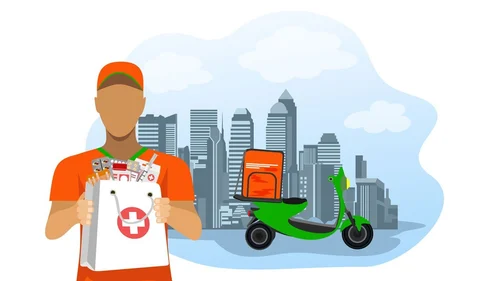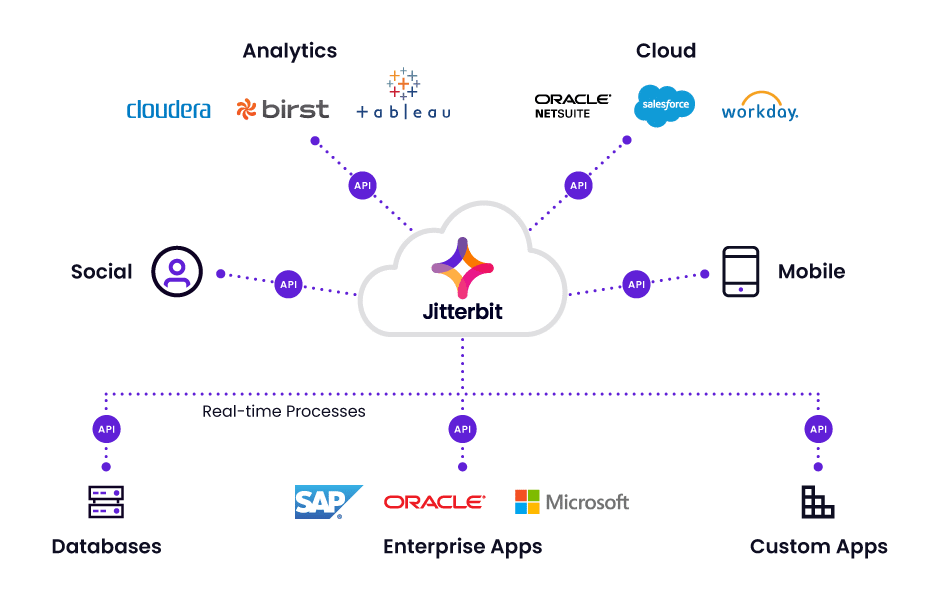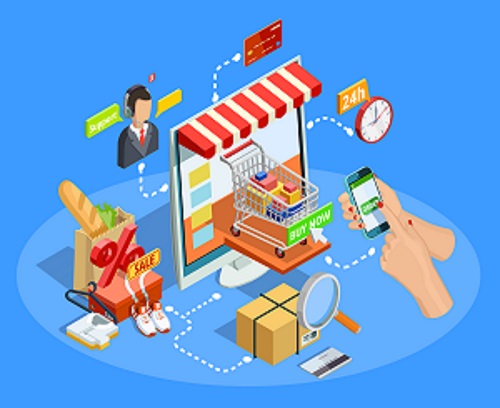Medicine delivery apps have revolutionized access to essential medications, bringing convenience and accessibility directly to people’s doors. For individuals with mobility challenges, those living in remote areas, or simply those managing busy schedules, these platforms make it easier than ever to get the medications they need.
But as demand for these services grows, particularly during peak hours, delivery apps face significant challenges. High-demand times—like mornings, evenings, flu seasons, and during health emergencies can strain resources, delay deliveries, and test the quality of service.
This article explores how medicine delivery apps navigate these peak periods, balancing high demand with a focus on timely and reliable delivery. By examining the strategies used to manage peak traffic, we’ll see how these platforms are creating a seamless experience for their users
Understanding Peak Demand in Medicine Delivery Apps
Before delving into the specific solutions, it’s essential to understand what causes peak demand in medicine delivery services in the US. Peak demand times in medicine delivery apps can arise due to a variety of reasons:
-
Seasonal Demand: During flu season or allergy season, orders for medications like flu shots, cold remedies, and allergy treatments can spike.
-
Public Health Emergencies: Events such as the COVID-19 pandemic or severe weather conditions can lead to a sudden increase in demand for essential medicines.
-
Daily Patterns: Peak hours generally occur in the mornings and evenings when customers place orders before or after work.
-
Special Events: National health initiatives or local health drives can cause temporary spikes in demand, as can new medicine releases or updates from health authorities.
By anticipating these demand patterns, medicine delivery apps can develop strategies to manage order volumes more effectively.
1. Inventory Management: Ensuring Medicine Availability
One of the core strategies for managing high demand involves maintaining a robust inventory system. Medicine delivery apps use inventory management techniques to ensure they have sufficient stock of frequently ordered medications, particularly during peak hours.
-
Real-Time Inventory Tracking: By tracking inventory levels in real-time, delivery apps can monitor supplies of high-demand items and adjust stock based on demand forecasts.
-
Collaboration with Pharmacies: Many delivery platforms partner with multiple pharmacies to expand access to a larger inventory and a variety of medication options.
-
Automated Reordering Systems: Automated systems reorder critical stock before it runs out, reducing the risk of shortages during peak times.
2. Optimizing Delivery Routes for Faster Service
Efficient delivery routing is essential to meet the surge in orders during high-demand times. By optimizing delivery routes, medicine delivery apps can improve delivery speed and meet customers’ expectations for timely service.
-
Route Optimization Algorithms: Many apps use algorithms that calculate the most efficient routes based on real-time data, allowing drivers to make multiple stops without unnecessary delays.
-
GPS Integration and Traffic Analysis: Integrating GPS tracking with traffic data helps drivers avoid congested routes, ensuring quicker deliveries even during busy hours.
-
Batching Deliveries: In areas with high demand, batching multiple deliveries within a small radius allows drivers to maximize efficiency and reduces delivery time for each order.
3. Using AI for Demand Forecasting
AI-driven demand forecasting has become a game-changer for medicine delivery apps in managing peak periods effectively. By analyzing past order trends and external factors like seasonal flu trends, AI can predict surges in demand and help businesses prepare accordingly.
-
Historical Data Analysis: Machine learning models analyze historical demand patterns, allowing apps to anticipate busy times and adjust staffing, inventory, and resources accordingly.
-
Seasonal and Weather Pattern Analysis: AI models consider weather patterns, seasonal illnesses, and local events to make more accurate predictions on when high demand will occur.
-
Predictive Inventory Management: With better forecasting, apps can restock specific medications proactively, reducing the likelihood of shortages.
4. Dynamic Staffing for Flexible Operations
Managing demand during peak hours often requires additional human resources. Dynamic staffing allows delivery companies to meet increased demand by adjusting their workforce in real-time.
-
On-Demand Staffing Models: Apps may collaborate with freelance drivers or temporary employees who are available to work during peak hours, offering flexibility in staffing levels.
-
Scheduling Based on Forecasts: By using demand forecasts, apps can schedule more drivers during peak hours to accommodate the increase in orders.
-
Training for Efficiency: Cross-training team members to handle various roles ensures that the workforce remains agile and able to address immediate demand changes.
5. Prioritizing Orders and Offering Delivery Options
When demand is high, prioritizing orders based on urgency and customer requirements becomes essential. Medicine delivery apps handle this by offering different delivery options, which allow customers to select the level of service they need.
-
Express Delivery Options: Many apps provide express delivery options for urgent medical needs, ensuring those orders are prioritized.
-
Scheduling Deliveries: Allowing customers to schedule deliveries can reduce demand during peak hours, distributing orders across different times of the day.
-
Urgent Order Handling: In certain cases, customers with specific medical conditions might require prioritized delivery, and apps often offer options to flag such orders.
6. Implementing Notifications and Updates to Manage Expectations
During peak hours, customers may experience delays due to the high volume of orders. Providing timely notifications and updates helps manage customer expectations and improve their experience.
-
Real-Time Order Tracking: Allowing customers to track their delivery status in real-time keeps them informed and reduces concerns about delays.
-
ETA Notifications: Regular notifications with estimated times of arrival (ETA) updates allow customers to plan accordingly and reduces inquiries to customer support.
-
Proactive Communication: If there’s a delay, proactive communication assures customers that their order is on the way, which can help maintain trust during high-demand periods.
7. Maintaining Data Security and Privacy
High demand and peak times often mean that a larger amount of personal and medical information is being processed simultaneously. Ensuring data security and protecting customer information remains a priority, especially during high-traffic periods.
-
Secure Data Handling: Medicine delivery apps adhere to strict privacy policies and encrypt sensitive customer data.
-
Compliance with Regulations: Compliance with healthcare regulations, such as HIPAA in the USA, ensures that data is handled securely, especially when the volume of transactions spikes.
-
Automated Systems for Secure Processing: Automated security systems reduce human error and enhance data protection during high demand, ensuring a seamless experience for customers without compromising privacy.
8. Partnering with Third-Party Apps to Streamline Deliveries
For some medicine delivery services, partnering with third-party logistics or delivery apps can help manage peak demand. By utilizing external resources, these platforms can ensure that customers receive timely deliveries even when in-house resources are stretched thin.
-
Third-Party Fleet Services: Collaborating with third party apps provides additional drivers, especially during high demand.
-
Integrated Delivery Platforms: Third-party integrations allow medicine delivery apps to access additional logistics resources without increasing internal staff.
-
Enhanced Coverage Areas: Partnering with third-party services expands geographic reach, enabling timely deliveries even in remote or underserved areas.
Conclusion:
Medicine delivery apps have become indispensable for individuals seeking convenient access to medications. Handling high demand and peak hours effectively requires a combination of advanced technology, efficient logistics, and customer-focused strategies.
By implementing demand forecasting, optimized delivery routes, dynamic staffing, and effective communication, medicine delivery apps are well-equipped to meet the needs of customers without compromising service quality or security.
As the need for on-demand healthcare services continues to grow, these platforms are refining their approaches to high-demand periods, ensuring that essential medications are always accessible when they’re needed most. For customers, this means a seamless experience where medications arrive reliably and on time, making healthcare more accessible and manageable than ever.





